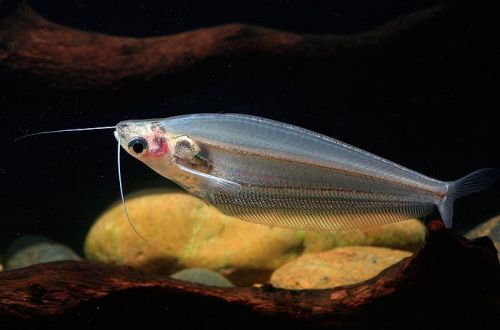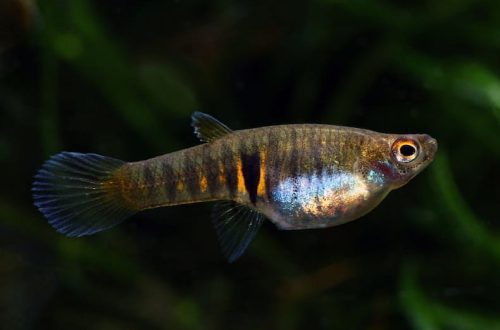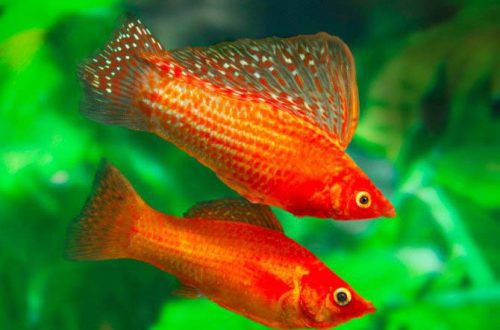
Two-tailed glass catfish
The two-horned Indian glass catfish, scientific name Kryptopterus bichirris, belongs to the Siluridae (Catfish) family. Rarely seen in the aquarium hobby, although its name is often applied to another very similar species, the common Glass Catfish. Considered easy to maintain. Compatible with other non-aggressive species of similar size.

Contents
Habitat
It comes from Southeast Asia from the main river systems of Thailand, Laos, Cambodia, Vietnam, Peninsular Malaysia and the Greater Sunda Islands (Sumatra, Borneo, Java). Recorded in the Mekong, Chao Phraya, Hari, Rajang, Kapuas rivers and their numerous tributaries. It occurs in regions with fast currents, and at the end of the rainy season in quiet backwaters of floodplain lakes and swamps.
Brief information:
- The volume of the aquarium – from 250 liters.
- Temperature – 20-28°C
- Value pH — 6.0–7.5
- Water hardness – 2–15 dGH
- Substrate type – any
- Lighting – preferably subdued
- Brackish water – no
- Water movement – light or moderate
- The size of the fish is 12–15 cm.
- Food – any variety of food
- Temperament – peaceful
- Keeping a group of at least 3-4 individuals
Description
Adult individuals reach a length of 12-15 cm. The fish has an atypical body shape for catfish – elongated and flattened laterally. The dorsal fin is absent, the ventral fin stretches from head to tail. The coloring is grey. Sexual dimorphism is weakly expressed. Males and females have few visible differences.
It is a close relative of the Glass catfish (Kryptopterus vitreolus) and outwardly practically indistinguishable from it. It can only be identified by its opaque body.
Food
Carnivorous species in nature, feeds on crustaceans, invertebrates and smaller fish. A variety of foods should be served in the home aquarium, combining dry, frozen and, if possible, live foods of a suitable size.
Maintenance and care, arrangement of the aquarium
The optimal size of the aquarium for a group of 3-4 fish starts from 250 liters. The design is arbitrary, but due to its timid disposition, it is recommended to provide several shelters in the form of thickets of plants and / or a labyrinth of intertwined snags. Also, any decorative items are suitable as an alternative.
The two-horned Indian glass catfish is not demanding on the hydrochemical composition of water and is able to live in a fairly wide range of pH and dGH values, which reduces the laboriousness of its maintenance in terms of water treatment. It should not be introduced into a biologically immature aquarium. It is important to ensure stable water conditions and prevent the accumulation of organic waste that could disrupt the nitrogen cycle.
Behavior and Compatibility
Peaceful, even timid catfish. Prefers to be in groups of 3-4 individuals. As neighbors, fish similar in size can be considered. Will not be able to compete for food with large and overly active species. It is worth remembering the carnivorous diet. Fry and other very small inhabitants can become an accidental victim.
Breeding / breeding
Due to their rarity in the aquarium hobby, there is no reliable record of successful breeding in the home aquarium.
Fish diseases
The cause of most diseases is unsuitable conditions of detention. A stable habitat will be the key to successful keeping. In the event of symptoms of the disease, first of all, the quality of the water should be checked and, if deviations are found, measures should be taken to correct the situation. If symptoms persist or even worsen, medical treatment will be required. Read more about symptoms and treatments in the Aquarium Fish Diseases section.





